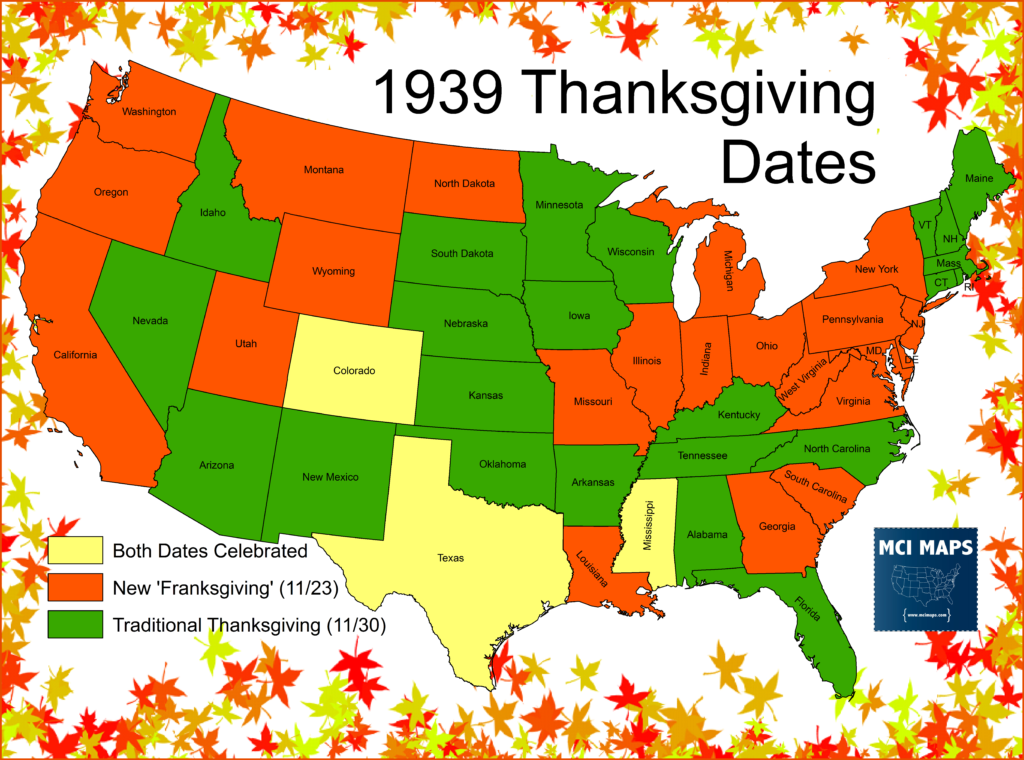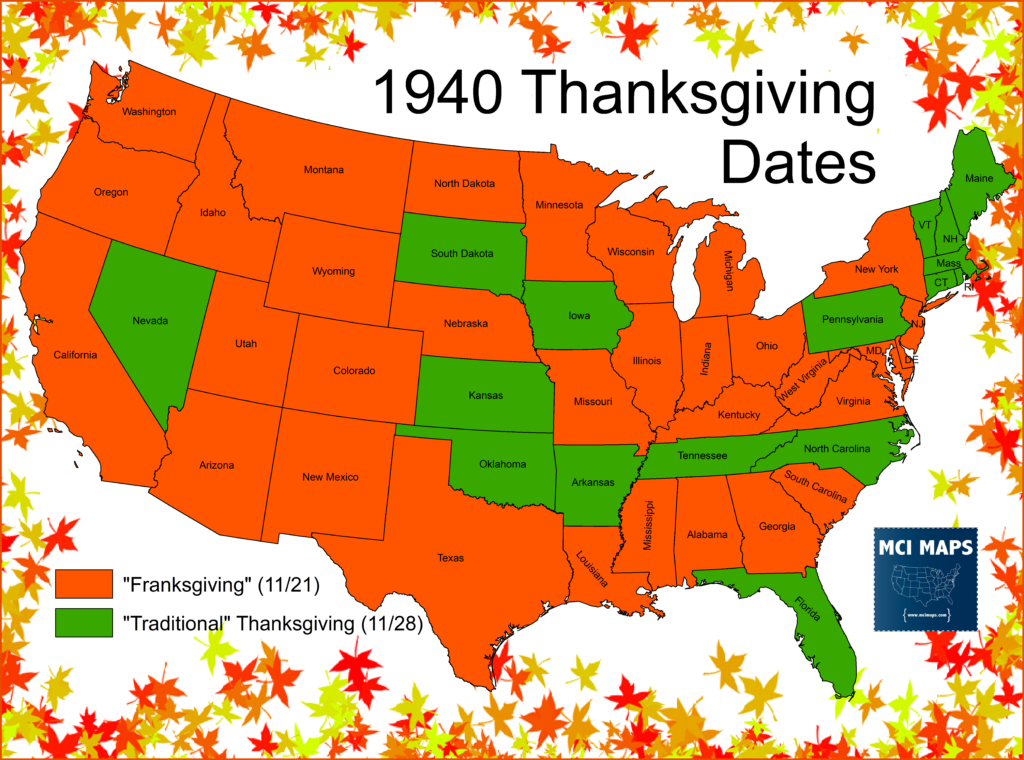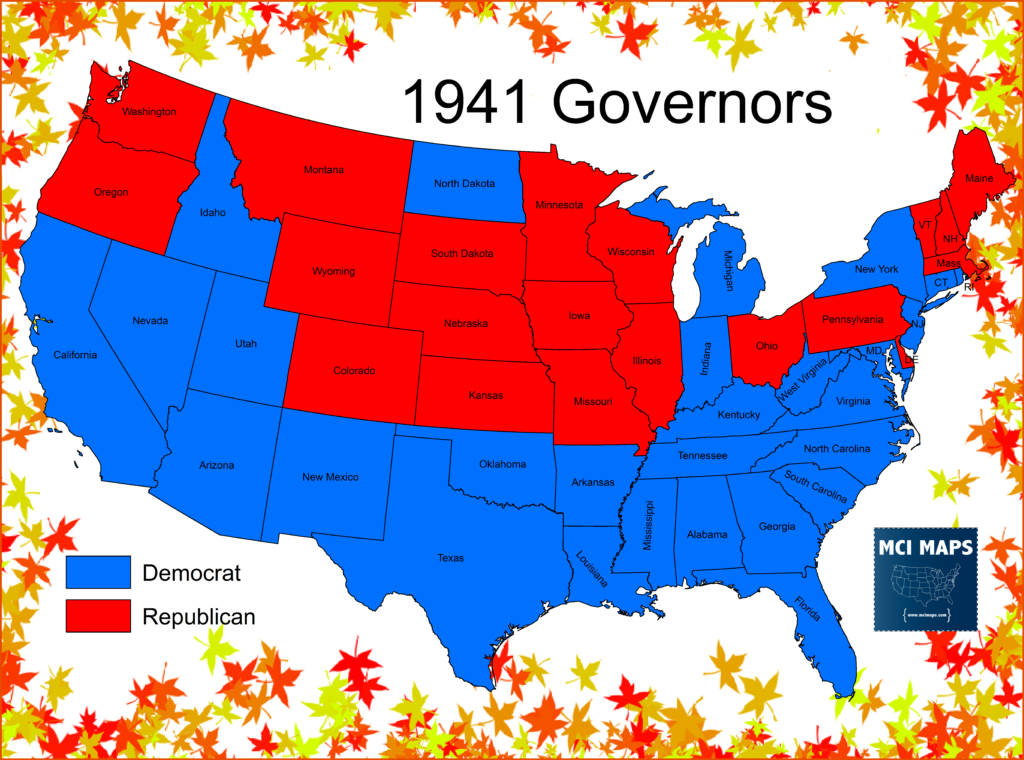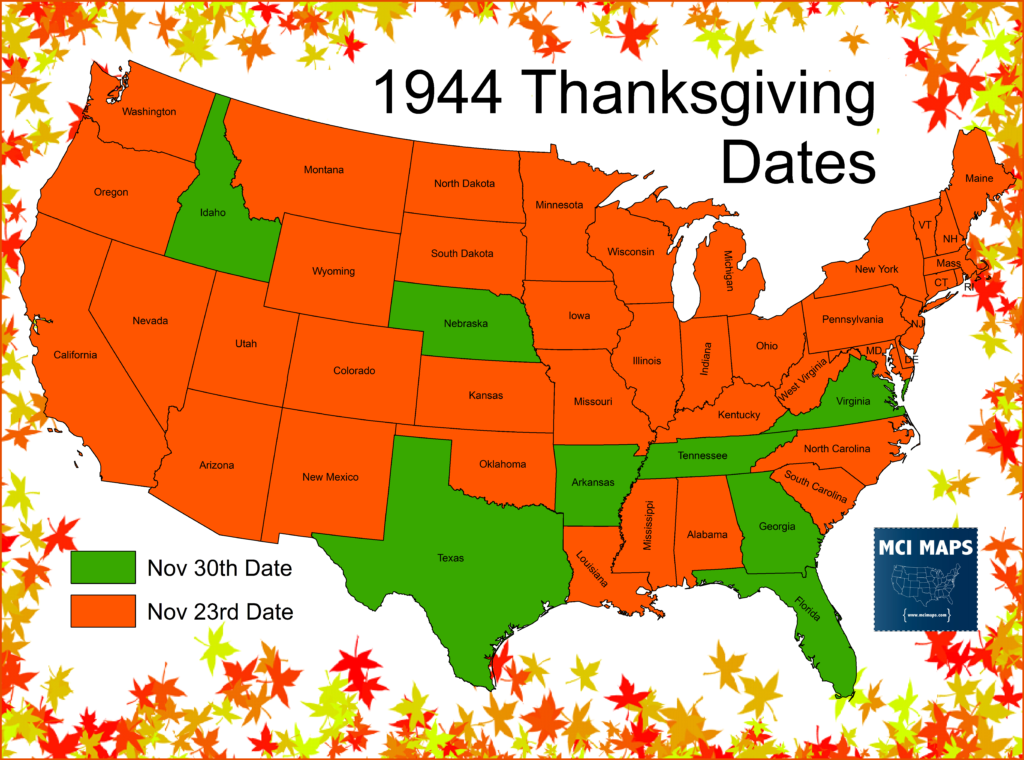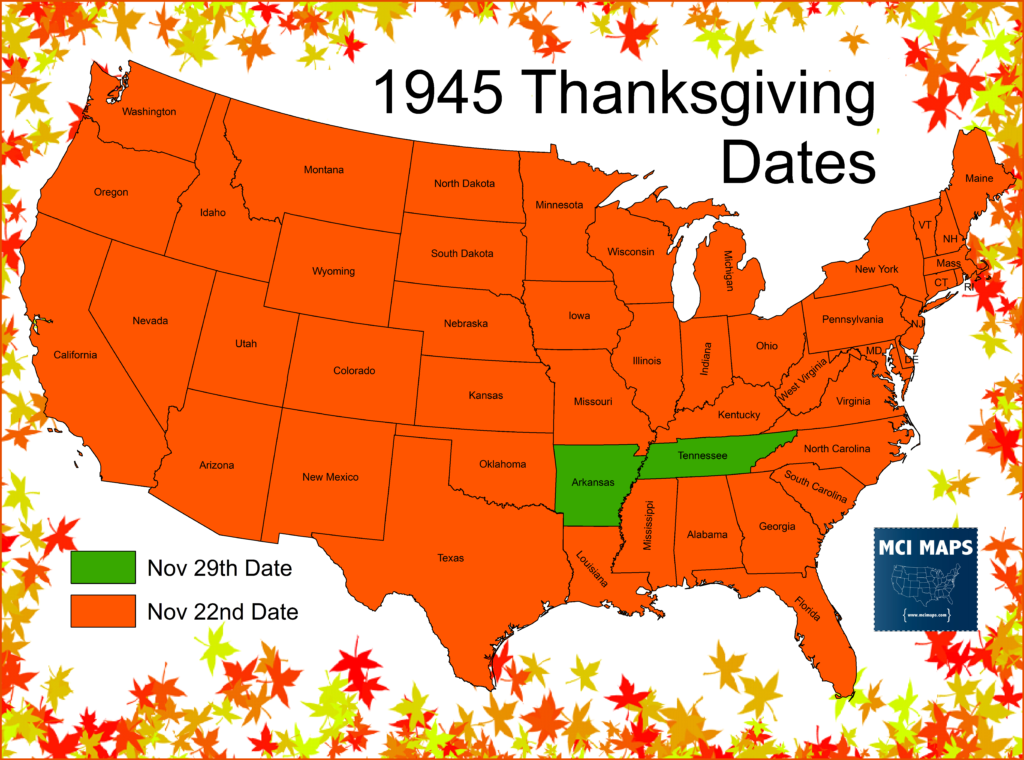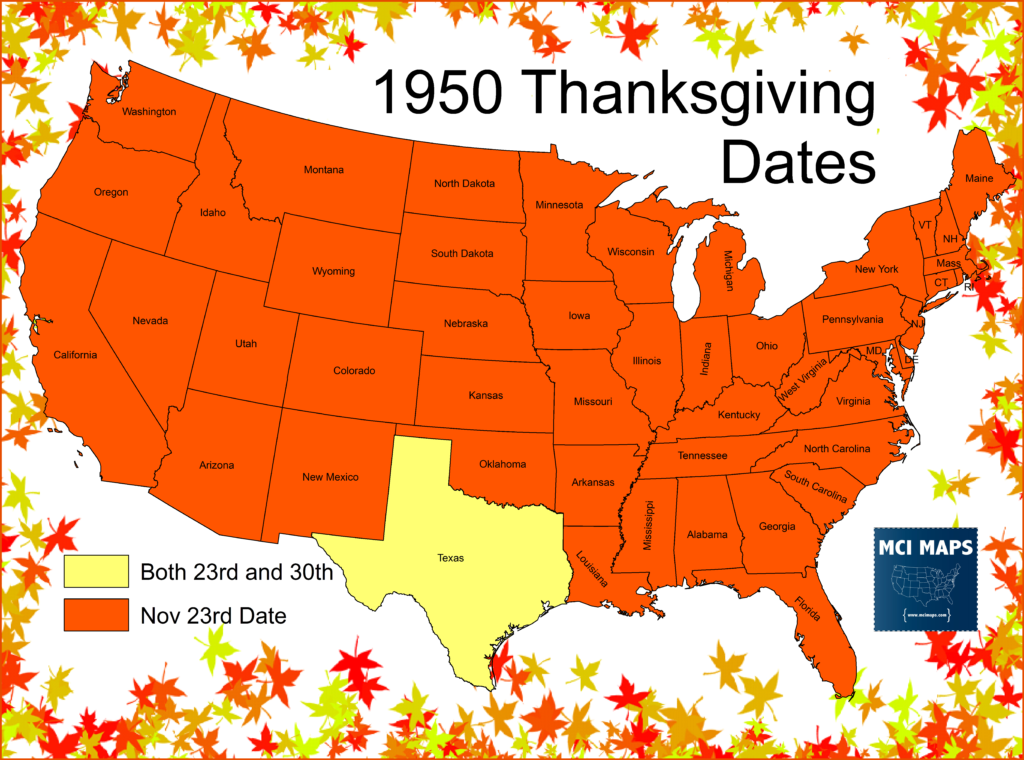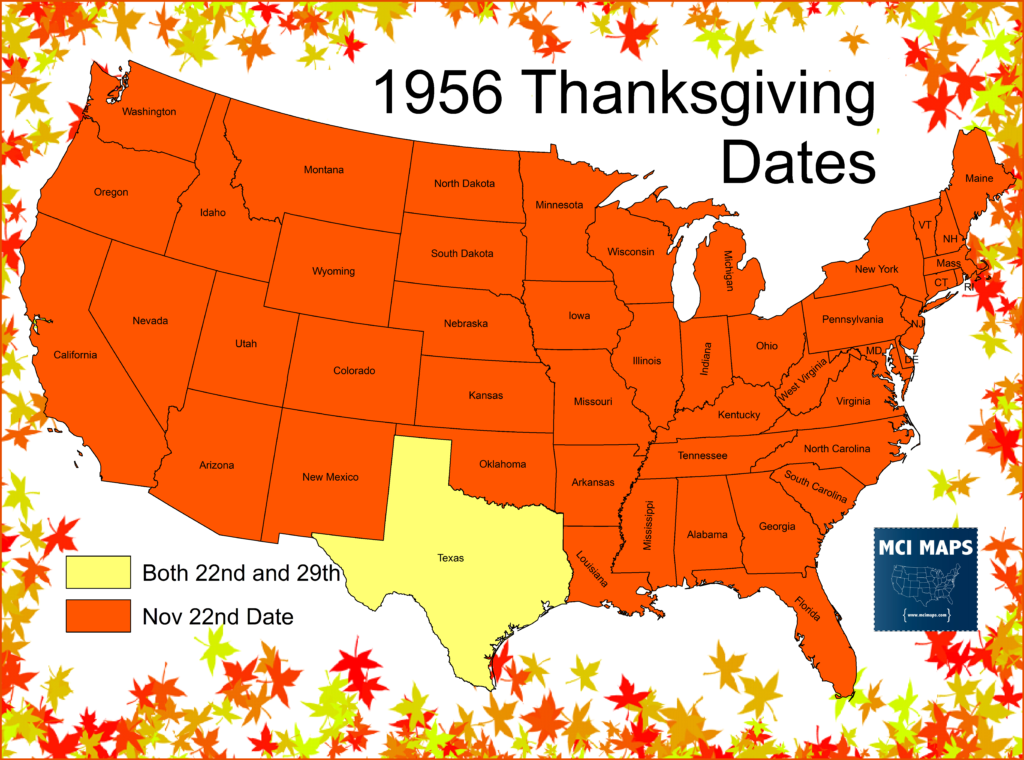Thanksgiving
Thanksgiving in America is meant to be a time of year when family gather together to eat and give thanks. Its also a time of year when family get together to watch football and argue about politics. However, for the most part we think of Thanksgiving as being above the political left-right debate. However, many do not know the tale of “Franksgiving” – a time when Thanksgiving became a very heated political issue.
Franklin D Roosevelt and Thanksgiving: 1939-1941
The controversy began in August of 1939 when some of the retail lobbyists in America worried about the late date of Thanksgiving. Since the Civil War, Thanksgiving was celebrated on the last Thursday of November. However, 1939 would have a November with five Thursdays and Thanksgiving would fall on November 30th. Lew Hahn, who was GM for the American Dry Goods Association, sent a letter to the Commerce Department expressing concern the late date would be fewer days for sales before Christmas. With the economy still reeling from the Great Depression, worries of economic slumps were taken seriously. The issue got to FDR and he decided to move up the date of Thanksgiving from the 30th to 23rd for the year.
The response was not what FDR had hoped. Reaction from lawmakers and the public was not supportive of the move. Voter sentiments fell on ideological lines, but with Republicans much more passionate in opposition. A Gallup poll from the time found Democrats backed the move 52-48, but Republicans were opposed 79-21. Overall voters opposed the measure 62-38. Republican lawmakers were no more supportive. Many GOP governors pledged to keep the date on the original day planned. The November 23rd date was derided as “Franksgiving” by FDR opponents.
While the era of FDR is a time of Democratic dominance in politics, by this point there were plenty of Republican governors again. The 1938 midterms had aided the GOP in replenishing their ranks; which otherwise had been decimated between 1930 and 1936. By 1939 there were 19 GOP Governors and 29 Democratic Governors.
Many, but not all these GOP governors opposed the move of the date and planned to move forward with the November 30th date. A slew of Democratic states, particuarly in the South refused to move to the earlier date. Southern resistance can be attributed to two key things. FDR and Southern Democrats had a rocky relationship and second, college football games had already been set. An Arkansas coach threatened that the state would go GOP before messing with their football schedule.
In the end, 22 states sided with the President and did their Thanksgiving on the 23rd. 23 states kept the original date and 3 celebrated a combination of both. Common terms used for the dates where Democratic Thanksgiving and Republican Thanksgiving; as well as “Traditional Thanksgiving” vs “Franksgiving.”
GOP states broke down 12 for the old date and 6 for the new, with 1 doing both. Democratic states broke down 16 for the new and 11 for the 0ld, with 2 doing both. Democratic states that kept the date the same were heavily based in the south. The only non-southern states with Democratic Governors to keep the old dates were in the Southwest (NV, NM, AZ).
The controversy wasn’t over. FDR made his intention to declare an earlier date in 1940 as well. That year the day fell on the 28th and FDR proposed a date of the 21st. The measure was still polarizing but actually saw much more agreement that previous years. 32 states agreed on the date while 16 remained opposed.
Democratic states were much more unified. Of the 30 Democratic Governors, 24 states held their date on the 21st. 5 of the 6 Dem holdouts were southern plus Nevada. Republican opposition weakened with 10 GOP Governors sticking with the later date but 8 agreeing on the 21st. GOP-strong New England remained a bedrock of opposition.
Despite the increase in states moving to an earlier date, FDR knew the issue wasn’t worth the fight. After the move didn’t generate increases in sales FDR agreed to move the date back to the last Thursday, with 1941 being the last year he’d use the earlier date. The split between the states was not worth it; as it caused confusion and frustration for citizens. Different dates meant family get-togethers were not always feasible and in places like Eastern Iowa, where kids went to school in Illinois, the divide in the states created headaches when it came to school days off. Such a situation actually caused some Eastern Iowa counties to close businesses on on both days; creating divides WITHIN states.
Just like the year before, 32 state held their Thanksgiving earlier (this time on the 20th) while 16 opted for the 27th. While the numbers didn’t change some states did trade. This Thanksgiving followed the 1940 Gubernatorial elections (which saw most elected officials sworn in January of 1941).
In states like Montana, Nebraska and Delaware, new GOP governors resulted in a switch from FDR’s date to the traditional last Thursday date. In other instances Democratic Governors moved dates. Connecticut and Rhode Island elected Democratic Governors who moved to the earlier date, but so did GOP Governors in Massachusetts and Maine.
Congress Gets Involved
Meanwhile in 1941, Congress felt it was time to sort this mess out once and for all. Representatives from the Midwest, where the Turkey population was largely raised, insisted that a fixed national date was needed to ensure supply met demand. While some Democrats were nervous of going against FDR, the President’s backtrack on his own date changes made things much smoother. After some debate, the House and Senate both unanimously passed a joint resolution in December of 1941 expressing that Thanksgiving would be on the 4th Thursday of November. Most years this would mean the last Thursday. However, if a 5th Thursday was on the calendar, the 4th would be recognized as Thanksgiving.
Remaining Divide: 1944 – 1956
Things went smoothly in 1942 and 1943, but then came 1944, the first year since the resolution passed with 5 Thursdays in November. While 40 states stuck with the 4th Thursday motto, 8 states insisted on celebrating on the 30th that year.
Most states were in the South and you guessed it, football was a major factor. Other factors came simply down to tradition and a belief that it should be the last Thursday. Nothing in federal law compelled these states to adopt the Congressional resolution.
1945 again saw 5 Thursdays. However, by this point opposition faded. The 8 states from last year saw that it looked bad for them, as they were so few in number, and caused scheduling headaches for residents who had family out of state. By 1945 we were down to 2 states holding out.
The next 5 Thursday year came in 1950. By this point Arkansas and Tennessee had come into the fold. Texas, however, opted to hold two Thanksgivings, one on the 4th Thursday and one on the 5th. This was again largely due to a sense of tradition.
1951 also had 5 Thursdays. Texas Governor Shivers decided to hold the date on the 22nd with the rest of the nation. Shivers cited the confusion from the year before. However, at the same time the legislature had passed a law that would mandate Texas celebrate its Thanksgiving on the last Thursday of November from 1952 and onward.
Also, despite Texas celebrating Thanksgiving on the 22nd, the traditional Thanksgiving college football game of Texas Univ VS Texas A&M was still held on November 29th.
When 1956, and its 5 Thursdays in November, came along the Texas law kicked into effect. In order to balance competing viewpoints the state opted to again have two Thanksgivings that year. The rest of the state remained settled on the 4th Thursday.
At some point after this Texas changed its law to conform with the rest of the nation. The next year with 5 Thursdays, 1961, saw all states celebrate on the same day. Since then all states in the union celebrate Thanksgiving on the 4th Thursday of November.
Since then we have had no debate or controversy over dates when it came to Thanksgiving. FDR hoped his move would help he economy and keep business groups (who were none too please with several of his policies) happy. In the end, though, the move didn’t generate sales like intended and only served to upset many people and create a headache that was best avoided.
FDR wasn’t punished by the electorate though – he was re-elected to a 3rd term at the height of the controversy.



